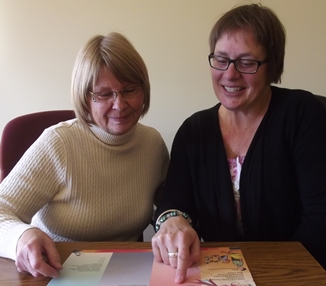Bow Valley Early Childhood Development Coalition
 |
The coalition and the Banff’s Family and Community Support Services set up an action group to try and address some of the issues. The group has drawn representatives from public health, addictions and mental health, the YWCA of Banff, Bow Valley Parent Link, settlement services and other organizations. While it is still ‘early days’, the group has already engaged some of the bigger employers in the Lake Louise area to make sure they are included in the conversations, as the issues affect them and their employees.
Community at a glance
The Bow Valley ECD Community stretches along a corridor of more than 300 kilometres north to south that encompasses Banff, Lake Louise, Canmore and Exshaw. Many residents move to the area to pursue an outdoor, active lifestyle or to work in the hospitality industry that serves the four million tourists that visit the area each a year.
As a result, there is a large population of hospitality workers, many of them seasonal. For example, in Banff, 94 per cent of workers are in the service sector and temporary residents are estimated to make up 12 per cent of the population (8,244 people). In the Town of Canmore, however, about 2 per cent of its population of 12,317 are engaged in seasonal work and about 17 per cent in food and accommodation. Exshaw’s economy relies largely on a cement plant, mining and logging operations. The hamlet of 362 borders the Stoney First Nation reserve, and many Stoney children go to school in Exshaw.
EDI results
According to EDI baseline data, 45 per cent of young children in the Bow Valley area are developing appropriately in all areas of development. Almost a third are experiencing difficulty or great difficulty in their emotional maturity. Subcommunity results differ a great deal. Thirty-four per cent of young children are experiencing great difficulty in one or more areas of development in one community, for example, while 22 per cent are experiencing great difficulty in one or more areas in another.
Strengths
- The community was an “early adopter” of the EDI, collecting information in 2007 and 2008 as part of a pilot project.
- Strong, collaborative relationships have been developed among agencies and with political leaders and media.
- Physical activity and outdoor recreational pursuits are popular and encouraged.
Challenges
- Large distances make transportation, delivery of and access to programs and services a challenge.
- Lake Louise is isolated and has no community resources. There is no public transportation to nearby Banff and its services. Children are bussed for more than an hour to get to the nearest school.
- The high cost of living in the resort towns of Banff and Canmore means that young families cannot afford to live there. The vacancy rate is low. Rental and real estate prices are high.
- A high percentage of jobs are in hospitality, a low-paying sector that is very vulnerable to global economic fluctuations.
Coalition action
- Subcommittees: Subcommittees, which focus on fundraising, promotion and education, and strategies to improve EDI results, hold action oriented meetings every month. The coalition also hopes to create a parent sub-committee to encourage more parental participation
- Parent education, school readiness: The coalition partnered with North Dakota State University to run “Gearing up for Kindergarten” (March 2013), a parent and family education program that supports child development, school readiness and healthy parenting. This 10-week program was piloted at an elementary school Initial results show that 100 per cent of participants felt the program increased their knowledge of child development and healthy parenting and 80 per cent of participants felt like it increased their confidence in being a good parent.
- Three-year-old fair: A three-year-old fair was organized in October 2012 and 2013 in Canmore. The focus was put on this particular age group because three year olds are not typically seen by public health and other professionals. Service providers from around the region set up information booths for parents and there were activities for the children who attended the event. A similar fair will be held in Banff in May 2014. Free transportation will be provided for Lake Louise families.
- Children’s calendar: The monthly Bow Valley Young Children’s Calendar, which lists events for young children and families, appears on websites for the Town of Banff, Town of Canmore and MD of Bighorn. Hard copies of the calendar are distributed to agencies, kindergartens, daycares, and health-care offices.
- Corporate support: After presenting EDI results and coalition plans to LaFarge Canada, the coalition received a donation of $10,000 in 2013 and $5,000 in 2014 from the cement plant.
- Networking: Coalition members connected with the coalition in Revelstoke, British Columbia, a mountain community of 8,100 that has turned its early child development results around dramatically to record the province’s second-lowest vulnerability results. School superintendent Anne Cooper, a strong supporter of the Revelstoke coalition, was invited to Bow Valley for a community talk.
"We can influence and prevent vulnerability if we have the will and courage to make early childhood development a priority for our community."
Coalition member Ellen Thuringer
